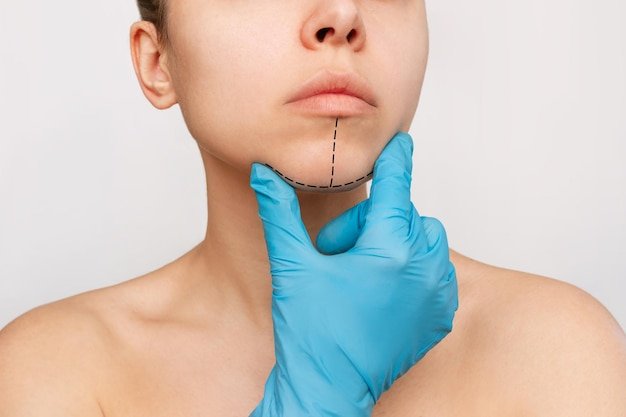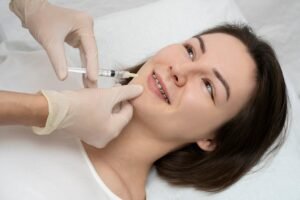
Buccal Fat Removal in Abu Dhabi is a cosmetic surgical procedure that involves the removal of fat pads located in the lower cheeks, helping to contour the face and create a more sculpted, defined appearance. Like any surgical procedure, proper post-procedure care is essential for ensuring a smooth recovery, minimizing complications, and achieving the best results. In this article, we’ll guide you through the necessary post-procedure care for buccal fat removal to ensure you recover effectively and enjoy the long-lasting benefits of the treatment.
Understanding Buccal Fat Removal
Buccal fat removal, also known as cheek reduction surgery, is designed to reduce the fullness in the lower cheeks. The buccal fat pads, located deep within the cheek area, contribute to the round, chubby appearance in some individuals. By removing part of these fat pads, the procedure enhances facial contours and produces a more angular and defined facial structure. The procedure is often performed under local anesthesia, and it typically takes about 30 minutes to an hour.
While buccal fat removal offers permanent results, it’s crucial to follow specific aftercare instructions to ensure proper healing and avoid any complications during the recovery phase.

Immediate Post-Procedure Care
After your buccal fat removal surgery, you will likely experience some swelling, discomfort, and bruising, which are common side effects of the procedure. The following steps are essential for managing the immediate post-operative period:
- Rest and Recovery: Following the surgery, it’s important to take it easy for the first 48 hours. Avoid any strenuous activities or exercises that could increase blood flow and cause additional swelling or bruising. Resting with your head elevated can help reduce swelling.
- Follow-Up Appointments: Your surgeon will schedule a follow-up appointment to monitor your healing progress and ensure there are no complications. Be sure to attend these appointments as directed.
- Ice Packs: Applying ice packs to your face in the first 48 hours post-surgery can help reduce swelling and bruising. Be sure to wrap the ice pack in a cloth to avoid direct contact with the skin, and apply it in intervals (15-20 minutes on, 20 minutes off).
- Pain Management: You may experience mild discomfort following the procedure. Your surgeon will likely recommend over-the-counter pain relievers, such as ibuprofen or acetaminophen, to manage pain and reduce inflammation. Avoid taking any medications that might increase the risk of bleeding, such as aspirin.
Diet and Hydration
During the recovery period, it’s important to maintain a nutritious diet and stay hydrated to support the healing process. Here are some tips:
- Soft Foods: For the first few days after the surgery, opt for soft, easy-to-chew foods to minimize any discomfort while eating. Foods like yogurt, soups, smoothies, and mashed potatoes are ideal. Avoid chewing on hard or crunchy foods that may cause unnecessary strain on your mouth.
- Avoid Spicy or Hot Foods: Spicy or very hot foods can irritate the healing tissues in your mouth and increase discomfort. Stick to room temperature foods during the early stages of recovery.
- Stay Hydrated: Drink plenty of water to stay hydrated, but avoid drinking through a straw, as the suction can put pressure on the treated area and increase the risk of complications.
Oral Hygiene
Maintaining proper oral hygiene is crucial to avoid infections and promote faster healing. Follow these oral care tips:
- Gentle Brushing: Continue to brush your teeth, but be gentle around the surgical area. Avoid brushing directly over the incisions for the first few days, as it can irritate the area and disrupt healing. Use a soft-bristled toothbrush.
- Mouth Rinse: Your surgeon may recommend using a prescribed mouth rinse or a saline solution to help prevent infection and keep the surgical site clean. Follow their instructions carefully, and be sure to rinse gently to avoid disrupting the incisions.
- Avoid Smoking: Smoking can impair the healing process and increase the risk of infection. It’s advisable to avoid smoking for at least a few weeks after the procedure.
Managing Swelling and Bruising
Swelling and bruising are common after buccal fat removal surgery, but they usually subside within a week or two. To minimize swelling and speed up recovery:
- Cold Compresses: As mentioned earlier, applying cold compresses or ice packs during the first 48 hours can significantly reduce swelling. After the first 48 hours, you can switch to warm compresses if your doctor approves, which can help improve circulation and promote healing.
- Head Elevation: When sleeping or resting, try to keep your head elevated with pillows to reduce swelling. This will allow gravity to help reduce fluid buildup in the cheeks.
- Avoid Heat Exposure: Avoid hot showers, saunas, and direct sunlight in the first week post-surgery, as excessive heat can aggravate swelling.
Scar Care and Incision Healing
Buccal fat removal typically involves incisions made inside the mouth, which means that scarring is minimal and not visible. However, it’s important to take care of the incisions to promote proper healing:
- Avoid Touching the Incisions: Do not touch or irritate the incisions inside your mouth. This can introduce bacteria and increase the risk of infection. Be cautious when eating, drinking, and speaking to avoid disturbing the area.
- Follow Aftercare Instructions: Your surgeon may provide specific guidelines on how to care for the inside of your mouth during the healing process. This may include avoiding certain foods, refraining from certain oral activities, or using prescribed oral rinses.
- Monitor for Signs of Infection: Keep an eye out for signs of infection, such as excessive redness, warmth, or pus near the incision sites. If you notice these symptoms, contact your surgeon immediately.
Exercise and Activity Restrictions
After buccal fat removal, it’s important to avoid strenuous activities that could increase swelling, cause bleeding, or interfere with healing:
- Limit Physical Activity: For at least the first week after surgery, avoid vigorous exercise, including running, lifting heavy weights, or anything that might increase blood flow to the face. You can gradually return to your normal routine after a few weeks, depending on how you heal.
- Facial Movements: Avoid excessive facial movements, such as wide smiles, laughing, or speaking loudly, for the first few days, as these movements can put strain on the treated area and hinder healing.
Long-Term Care and Results
- Final Results: It can take several months for the full effects of buccal fat removal to become visible, as swelling gradually subsides and the skin settles into its new shape. Be patient and allow your body time to adjust.
- Maintain a Healthy Lifestyle: Maintaining a healthy diet and regular exercise routine can help you preserve your results. However, weight fluctuations can affect the contour of your face, so it’s important to maintain a stable weight to ensure the longevity of the results.
Conclusion
Proper post-procedure care for buccal fat removal is essential to ensure the best possible results and a smooth recovery. By following your surgeon’s aftercare instructions, taking steps to reduce swelling, maintaining good oral hygiene, and allowing your body to heal naturally, you can enjoy a more sculpted, contoured face with minimal complications. Always reach out to your surgeon if you have any concerns or notice unusual symptoms during the recovery process.


